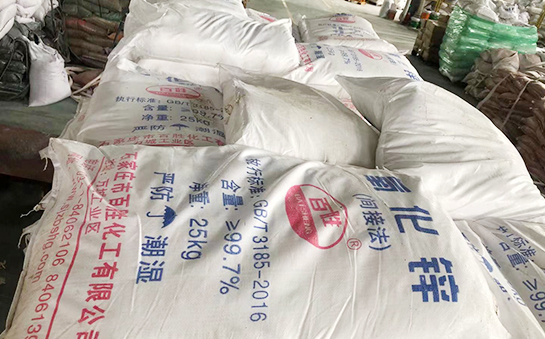Zinc oxide, as an important inorganic chemical raw material, is widely used in rubber, coatings, medicine, electronics and other fields. Its industry development has an important impact on the global economic and technological development. In recent years, the scale of the domestic zinc oxide market has gradually increased, and the number of fields involved has continued to increase. However, due to the wide variety of zinc oxide specifications and the shrinking demand for some specifications, the industry is also facing industry integration, with production capacity and output declining, and "new ideas" gradually appearing in the industry development.
Classification and application of zinc oxide
As far as the current classification of zinc oxide products is concerned, it can be roughly divided into three categories according to the production process: indirect zinc oxide, direct zinc oxide, and active (wet) zinc oxide. In different classifications, it is further divided into different specifications and contents. Among zinc oxide, indirect zinc oxide is the mainstream of zinc oxide, with relatively high production capacity and relatively concentrated downstream fields, mostly concentrated in the rubber field. The rubber field is also one of the largest application fields of zinc oxide products, with downstream consumption of zinc oxide accounting for about 50%-60%, and the proportion has been increasing in recent years. It is precisely because the proportion of zinc oxide in rubber applications continues to increase that the industrial integration of active zinc oxide has led to.
A "new idea" to form active zinc oxide
Active zinc oxide is also called wet zinc oxide. It has a nice name. Its production process is wet smelting. During the production process, it is necessary to carry out neutral leaching and acid leaching in the leaching agent, and finally form zinc oxide, while removing production wastewater. The wet production process is different from the indirect and direct zinc oxide calcination. The products produced have certain differences in specific surface area, particle size and activity. It is precisely because of these differences that different types of zinc oxide have gradually been applied to different fields. For example, direct zinc oxide and wet zinc oxide will be applied to the ceramic industry, which is the second largest application field of zinc oxide after the rubber industry. However, due to the downturn in the real estate industry in recent years, the ceramic industry has shrunk, and the data statistics are incomplete. In a certain domestic ceramic production area, ceramic enterprises have shrunk by nearly 70%, and zinc oxide sales have been hindered. In addition to rubber and ceramics, the other relatively small application areas have also experienced varying degrees of contraction. Therefore, active zinc oxide has gradually developed towards "new ideas".
Transformation from "new thinking" to "old direction"
Active zinc oxide has more prominent advantages in the deep cultivation process of the tire industry, because most of the raw materials of active zinc oxide contain materials and zinc ash, and the price of zinc raw materials is lower than or even far lower than the raw materials of indirect zinc oxide, and the price of finished products is lower than that of indirect zinc oxide. After ensuring the quality, the acceptance of downstream tire companies is also higher. Therefore, it has become the main reason for active zinc oxide to break the barrier. The reason for the new idea is the old direction, because the application of active zinc oxide in the tire industry can be traced back to a few years ago, but in the process of continuous development of the industry, the use of low-content zinc oxide has been gradually eliminated, and the application of active zinc oxide in the tire industry has been reduced. The main difficulty in the application of active zinc oxide in tires is that it is easier to overcome the problems of increased content, increased particle size and increased activity. Since then, with the further development of the active zinc oxide industry, product quality has continued to improve. Under the background of industrial integration, some well-known domestic tire manufacturers have purchased active zinc oxide, and the application is relatively stable. However, the road to industrial integration is long, and the amount of active zinc oxide that can be sold to tire companies is still far lower than indirect zinc oxide. Therefore, some active zinc oxide factories have accelerated the development of the tire industry this year.

Let us develop and progress together and create brilliance together
